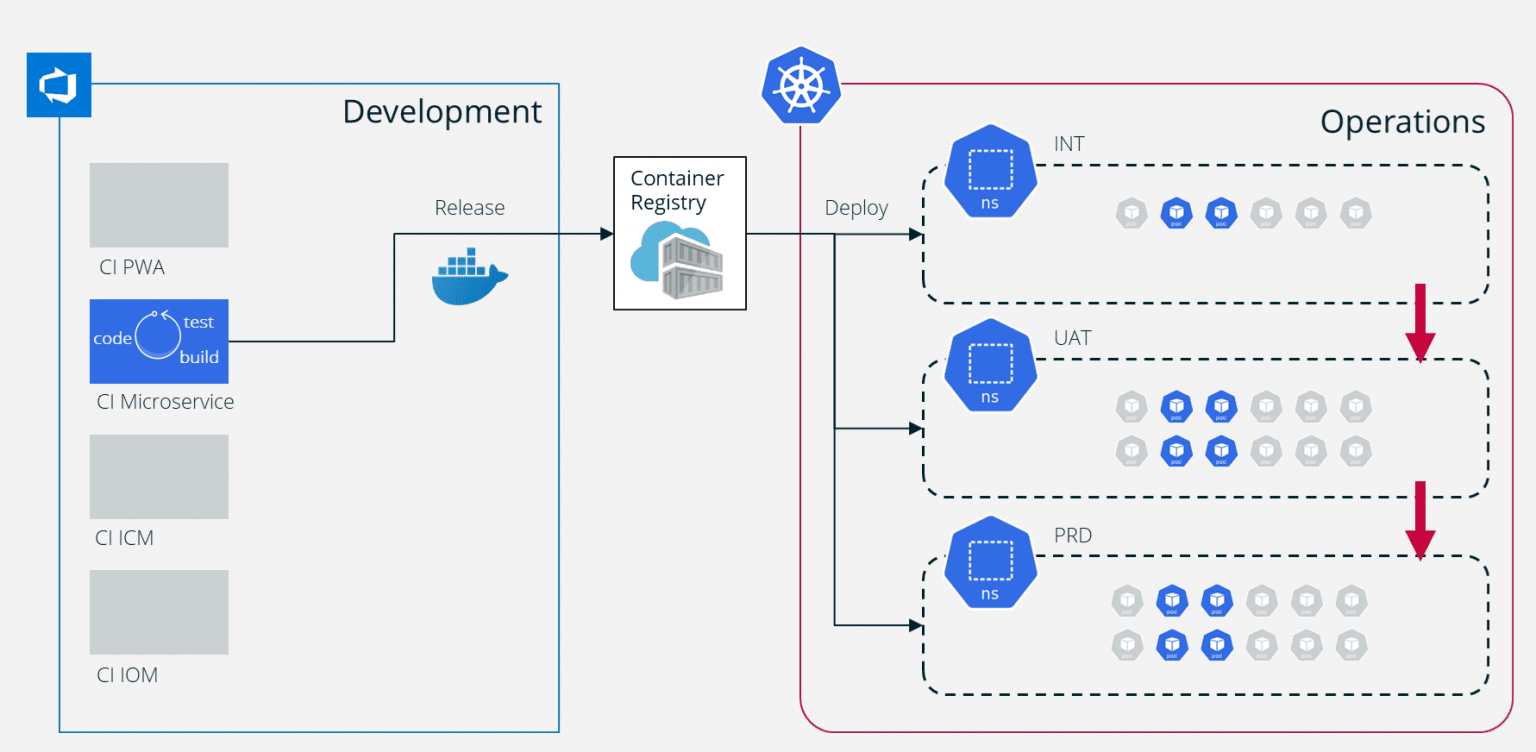A container registry is an important component of containerization technology, a centralized repository for storing and managing container images. It is essential for deploying and distributing containers across platforms and environments. In this article, we will explore what a container registry is, its significance, and the different types of container registries.
What is a Container Registry?
Container Registry is a repository where you can manage Docker images, run vulnerability analysis, and configure access control. There is no need for the user to rent a VM or allocate disk space to organize such storage. The entire infrastructure and necessary automation tools are implemented in the solution. Users can manage their containers via a control panel.
Container Registry is essential to the concept of efficient container management. It simplifies the storage, management, and deployment of container images for developers. The solution also integrates perfectly into CI/CD workflows.
Container images and registries
In simple terms, a container registry serves as a place for developers to store and share container images through a process of pushing them to the registry and pulling them to another system (for example, the Kubernetes cluster).
Container images include system libraries, code, system tools, settings, and other parameters necessary for running applications, thus providing developers with the benefits of portability and flexibility to scale quickly as workloads change or new applications are created. Besides images, they also store API paths and access control settings for container-to-container communication.

Why use a container registry
No company working with containers can do without an image repository. The way they are stored and used is crucial for the development process itself. There are typically thousands of container images involved in development. To organize and manage versions, programmers create multiple registries – for example, for development, production, and test environments.
Using the Container Registry offers developers a host of benefits, including:
-
API control and CLI tools.
-
The ability to replicate images to/from another repository.
-
The ability to create users with different roles and permissions.
-
Storage size control.
-
Vulnerability scanning.
-
A browser-based admin portal, accessible from anywhere.
In addition, the Container Registry provides a user-friendly interface.
Choosing between public and private registries
There are several types of container registries available, each with its own features and capabilities. Here are a few popular ones:
- Public Container Registries, such as Docker Hub and Google Container Registry, provide a basic set of features and are accessible to anyone. They offer easy access to images in the repositories, providing a flexible, easy-to-use building block for container infrastructure. This is the choice of developers who care about speed and ease of use.
- Private Container Registries offer the basic functionality of a public registry but are more secure due to role-based access control. In addition, they include vulnerability scanning for container images as well as the means to validate them.
Setting up and configuring a private registry is a more time-consuming task. However, with improved access control to workflows, private registries allow teams to better manage access. Consequently, they offer much greater resilience to misconfiguration, malware, or accidents.
Cloud providers can offer a ready-to-use Container Registry service. You completely manage the repository but without the hassle of running the Container Registry and maintaining the infrastructure. Moreover, cloud providers can offer additional features that are implemented on their platform. For instance, they offer a higher level of security for the repository.
When you need the Container Registry
This solution is necessary only for those companies that use containerization technologies in development, and microservices. When it is necessary to manage images and maintain a high level of security. If a company does not use Kubernetes, Docker, and similar solutions, the Container Registry is not useful.




